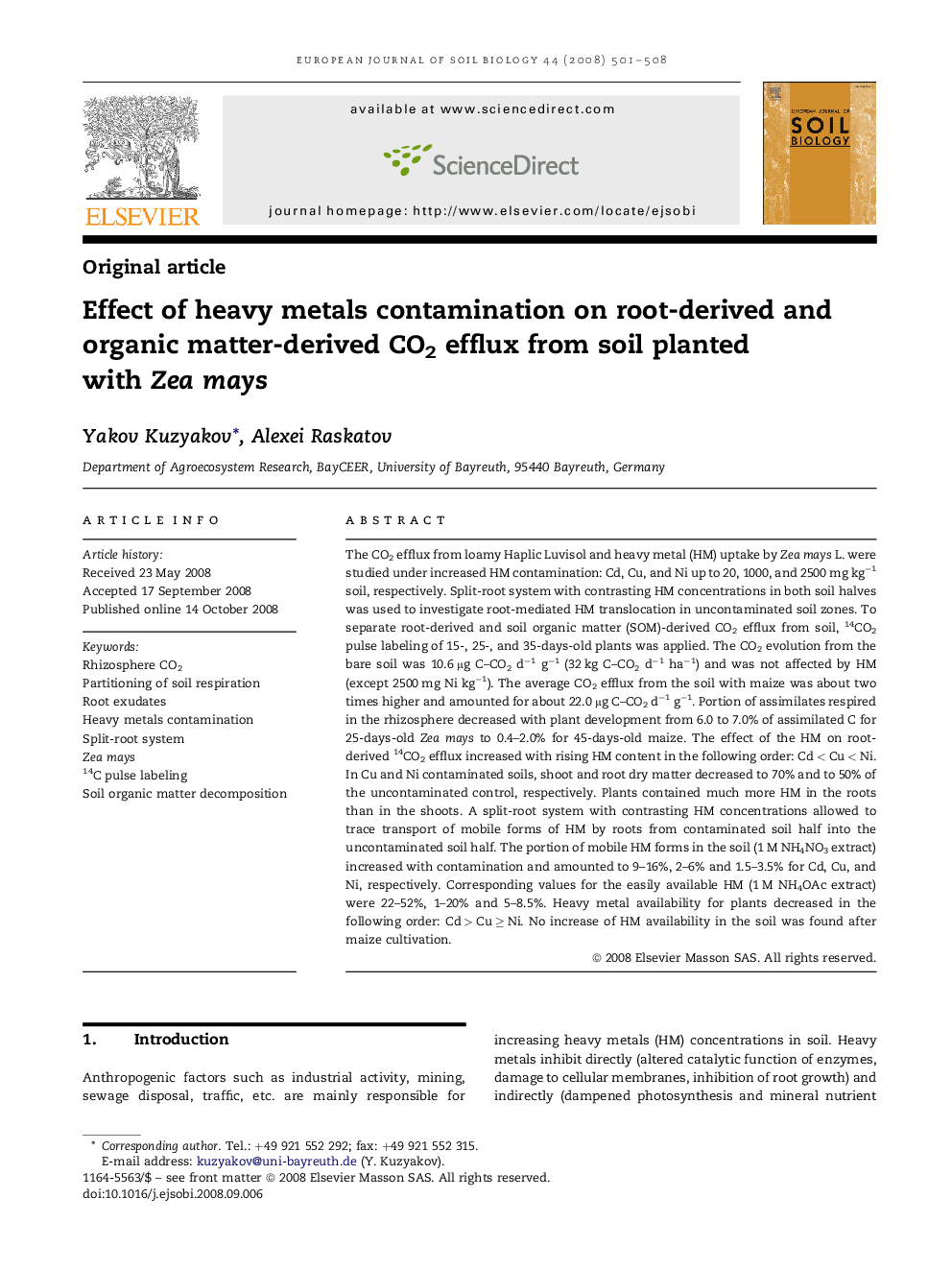| کد مقاله | کد نشریه | سال انتشار | مقاله انگلیسی | نسخه تمام متن |
|---|---|---|---|---|
| 4392378 | 1618161 | 2008 | 8 صفحه PDF | دانلود رایگان |

The CO2 efflux from loamy Haplic Luvisol and heavy metal (HM) uptake by Zea mays L. were studied under increased HM contamination: Cd, Cu, and Ni up to 20, 1000, and 2500 mg kg−1 soil, respectively. Split-root system with contrasting HM concentrations in both soil halves was used to investigate root-mediated HM translocation in uncontaminated soil zones. To separate root-derived and soil organic matter (SOM)-derived CO2 efflux from soil, 14CO2 pulse labeling of 15-, 25-, and 35-days-old plants was applied. The CO2 evolution from the bare soil was 10.6 μg C–CO2 d−1 g−1 (32 kg C–CO2 d−1 ha−1) and was not affected by HM (except 2500 mg Ni kg−1). The average CO2 efflux from the soil with maize was about two times higher and amounted for about 22.0 μg C–CO2 d−1 g−1. Portion of assimilates respired in the rhizosphere decreased with plant development from 6.0 to 7.0% of assimilated C for 25-days-old Zea mays to 0.4–2.0% for 45-days-old maize. The effect of the HM on root-derived 14CO2 efflux increased with rising HM content in the following order: Cd < Cu < Ni. In Cu and Ni contaminated soils, shoot and root dry matter decreased to 70% and to 50% of the uncontaminated control, respectively. Plants contained much more HM in the roots than in the shoots. A split-root system with contrasting HM concentrations allowed to trace transport of mobile forms of HM by roots from contaminated soil half into the uncontaminated soil half. The portion of mobile HM forms in the soil (1 M NH4NO3 extract) increased with contamination and amounted to 9–16%, 2–6% and 1.5–3.5% for Cd, Cu, and Ni, respectively. Corresponding values for the easily available HM (1 M NH4OAc extract) were 22–52%, 1–20% and 5–8.5%. Heavy metal availability for plants decreased in the following order: Cd > Cu ≥ Ni. No increase of HM availability in the soil was found after maize cultivation.
Journal: European Journal of Soil Biology - Volume 44, Issues 5–6, September–December 2008, Pages 501–508